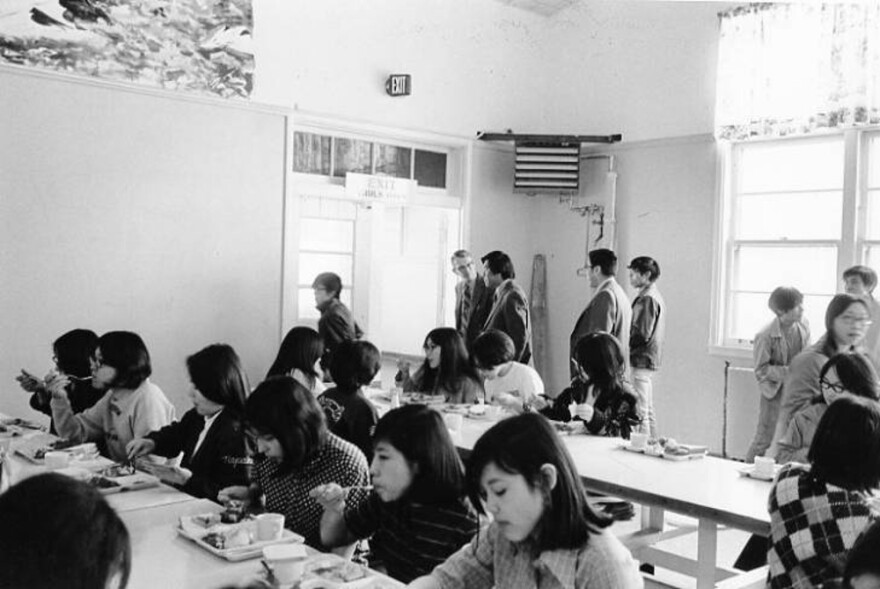Since May, the remains of more than 1,000 Indigenous children have been found at sites of former residential schools in Canada.
Petersburg residents gathered outside the municipal building Wednesday night for a candlelight vigil in their memory.
Diane Benson quoted Tlingit elder Jessie Johnnie during her remarks at Wednesday’s vigil.
“Yee gu.aa yáx̲ xʼwán. Yee léelkʼu hás x̲á yee x̲ʼéit has wusi.áx̲ yeedát. Yee gu.aa yáx̲ xʼwán,” she said in Tlingit. “Have strength and courage, all of you. Your grandparents are really listening to you now. Have strength and courage, all of you. We are beginning to walk along it, too.”
Benson, her parents and her grandparents all attended residential schools. She said the recent discoveries in Canada are shedding light on what happened to generations of Indigenous children in the U.S. too.
RELATED: Advocates hope return of Alaska Native boarding school student from Carlisle is first of many
“The loss of people, the cultural genocide, we continue to pay a price,” she said. “It’s impacted all of our lives. And this brings it more to the forefront for the nation.”
Benson said her grandmother had her mouth washed out with soap for speaking Tlingit. Benson grew up watching her grandparents whisper to each other in the language. Other family members experienced physical and sexual abuse.
Benson attended the Mt. Edgecumbe School in Sitka when it was run by the Bureau of Indian Affairs. She said not learning about the Tlingit language or history left a lasting impact.
“Many of us of our generation have a hard time sometimes — and I’m in my sixties — to express what kinds of things took place and how we felt and the difficulties we had,” she said. “But our hearts carry our culture. And what brings it to life the most is our language. And those schools literally beat it out of children.”
That’s why talking to elders is so important, said local Haida artist Janine Gibbons.
“It’s my hope that it’s not too late,” Gibbons said. “Right now is really a key time. It’s not knowledge that comes easy. You have to go out and search it.”
Last month, Interior Secretary Deb Haaland announced an investigation into boarding schools run by the Bureau of Indian Affairs. That agency ran five schools in Alaska.
The Petersburg Indigenous Arts and Awareness Committee hosted the vigil. The group formed during the creation of the Elizabeth Peratrovich mural now in front of the courthouse.
Benson said events like this week’s vigil can help educate and heal.
“We have to talk to one another as a people and reinforce to the younger people, those things you feel and that emptiness and that hurt is there for a reason. Now we need to help you fill that, and vice versa,” she said. “I think a lot of my generation has carried around a lot of hurt. So this empowers us. Honesty always empowers us.”

